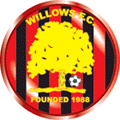Jack Charlton’s Football Style and PhilosophyMuch has been written about the long ball and pressing style of soccer that Jack Charlton employed during his time as manager of the Republic of Ireland. Members of the media, most notably TV soccer pundits Eamon Dunphy and Johnny Giles, were particularly critical of Charlton’s football philosophy. They have always maintained that given the talent within the Irish squad during his tenure as manager of Ireland he did not need to use the long ball tactics that he invariably employed. Charlton has always maintained that his approach to the game was dictated by the quality of the talent available to him and clearly he did not agree with the RTE panellists. If results are the measure of success then Jack Charlton was vindicated in his use of the long ball methods. In Paul Rowan’s book, The Team That Jack Built, Charlton is quoted as follows: “…people have got this idea that I don’t know about football, all I know about is motivation, humping the balls up, chasing f*****g this. A load of crap. I am the only staff coach that Elland Road has ever produced apart from Freddie Goodwin … I never got the Elland Road job but … if I had of got the Elland Road job I might have left it as it was, if it it needed leaving as it was. I might have changed things if I felt it needed change But I am capable of producing change and I am capable of playing a different design and playing a different pattern and looking at me players and saying ‘Where will I get the best out of them?’ That’s because I’ve been a student of the game for years, Long before Gilesy and Billy and Eddie Gray and Clarkie and all the rest of them. They never did f**k all what I’ve done. So I feel that I’ve worked at the business to have the right to produce something different the f*****g works.” Stabilise, Establish Patterns and Play to StrengthsNotwithstanding the foregoing Jack Charlton believed that with a national football team there is a need to standardise everything so that every player in the squad knows exactly what is expected of him. Charlton insists that a soccer manager must assess the quality and talent of the players that are available and build a pattern around that. The former Irish manager believed that there was a need to stabilise and establish a pattern of football that all of the players could recognise. His initial emphasis was on dead ball situations, practising during every training session on a small number of simple free kicks to start. In his early assessment of the Irish soccer squad in 1986 he recognised that the former Arsenal and Manchester United forward, Frank Stapleton, was the best header of a ball for his size that Charlton had ever seen. Therefore Jack determined that it was imperative to get the ball to Stapleton in ways that would maximise his heading ability. Role of the Goalkeeper and the DefendersWith this objective in mind Charlton began the indoctrination process with his goalkeepers. They were never to throw the ball to their defenders. The keeper had to kick every ball long – as far forward as possible. “I want you to kick every ball long, as high as you can into their half of the park.” The plan was to begin playing football in the opposition’s half of the pitch and not in your own half. Full backs were to view themselves as defenders and not as supporters for the forwards. Charlton issued instructions to the full backs to close the opposing wingers down, prevent them from getting clean ball and prevent crosses from getting into the penalty box. The centre halves must be ” … two big lads.” and pick up and mark the opposition forwards but do not get dragged out of position. Prevent the forwards getting headers on goal and if a ball is there to be won then ” … go and get the bloody thing.” Midfielders Only Play Football in the Opposition’s HalfJack Charlton’s recipe for his midfielders depended upon the playing pattern that he had decided upon. In the case of the Republic of Ireland he had determined to only play football in the opposition’s half of the pitch by pumping high balls up the pitch to get their defenders turned, and then press from midfield. This meant that, as mentioned before, the goalkeeper had to punt the ball as far forward as possible. If the centre-half had the ball he had to give it to the fullback who was to kick the ball long, up the field parallel to the touch line and dropping behind the opposing fullback. The centre half could not attempt this as this increased the risk of the ball going into touch because he would be kicking the ball diagonally. The forwards became attuned to this pattern and they automatically moved towards the space where the ball was being kicked by the full back. Obviously this was a high dropping ball and the attackers had to challenge the full back (that was typically smaller than a centre-half) for the ball in the air increasing the odds of winning the header. This was where the midfielders come in to the frame. It is their job to rush forward in support the forwards to snap up any knock-downs. If Ireland lost posssession the midfielders had to rapidly retreat to protect the defence. Forwards Had Very Defined and Specific RolesIn the context of having players of the physical stature, and with the aerial ability, of Niall Quinn or Tony Cascarino, Jack Charlton’s football philosophy was to anchor them in an advanced midfield role where they would attract the attention of a couple of defenders thereby creating space in other areas of the pitch. But when the ball was moved to the left or right the centre-forward was expected to move to the far post in anticipation of a cross. Once the cross came in the forward either had a header on goal or laid the ball off to an onrushing midfield player. The second, more mobile forward – usually John Aldridge, covered the width chasing down the long balls coming from the defence. It was an exhausting task that yielded very few goals from that particular forward. Jack Charlton’s View of his PlayersCharlton did not trust his players to improvise – except in the final third of the pitch, and even then only to a limited extent. “You can’t give players too much information … You’ve got to practise things until they become automatic in your game … As long as everybody has one thing to do in their game and know what it is, there’s no confusion. But once you make it two things … now you’re causing confusion.” Once he had his lomng ball football style established then he tried to refine it over the years getting ” … a bit different here … add a fresh ball there … a bit more movement into here. But basically your pattern is established and it stays.” Verdict on the Charlton Football Style and TacticsMost Irish fans like their soccer to be played in a certain way. They admire teams that get the ball down on the ground and play a passing game. But given a choice between pretty patterns and effectiveness, most fans will choose results over performance. Those Irish fans that lived through the Jack Charlton era witnessed many performances of the car crash variety but also got the results that they craved. Qualification for three major football finals justified Charlton’s methods and there are very few Irish soccer fans that would have swapped Euro’88 or World Cup ’90 & ’94 for attractive football and three near misses. Giles and Dunphy argue that the fans could have had both but who knows for sure? The only thing we know for certain is that before Jack Charlton came along (including six years when John Giles was the Irish manager) we had never qualified for anything, and then in a glorious eight years period we qualified for three major championships. The long ball means justify the results in the end? Sources:
|
April 24, 2024





